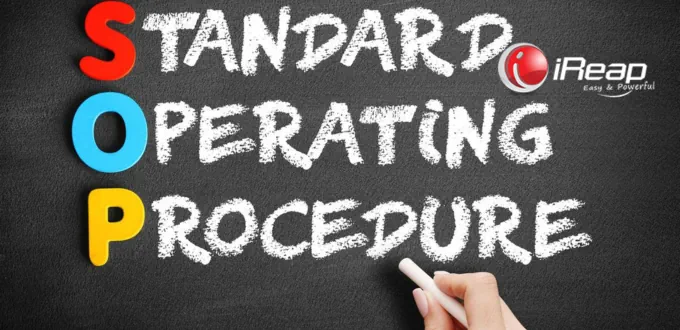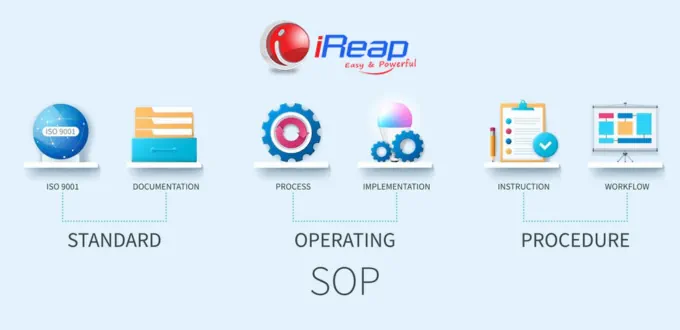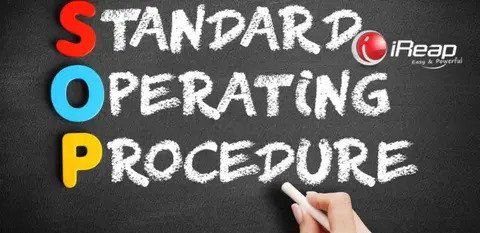
To run a business well and achieve success, you need thorough planning, organization, and efficient workflow. That’s why you need to create a systematic and structured company’s Standard Operating Procedures (SOP). Let’s find out 9 practical steps to create SOP for a company in this article.
9 Practical Steps to Create Company SOP
Company SOP is a systematic guide or work procedure that facilitates employees in completing tasks and reduces the likelihood of errors.
To obtain the benefits and achieve the goals of SOP, you need to follow the correct and appropriate steps in creating SOP. Here are the steps:
1. Identify the Purpose and Scope of SOP
Before starting the creation of SOP, identify the purpose and scope of the SOP. You can use questions like “What do you want to achieve with this SOP?” or “Which work process requires SOP?”
You can also review the overall business operations and specifically identify repetitive tasks that are prone to errors. For example, raw material procurement process, inventory and stock management, production equipment operation, and so on.
2. Analyze and Document the Required Processes
After identification, analyze and document the existing and non-existing processes.
To accomplish this step, collaborate with employees directly involved in the work process to understand the workflow precisely.
In essence, you need to have in-depth knowledge of the process to be SOP-ed through observation, expert interviews, and relevant data collection. This ensures that the information you gather is accurate and up-to-date for inclusion in the SOP...
3. Identify Stakeholders
Before creating company SOP, identify the stakeholders who will be involved in the SOP’s development and implementation.
For example, who will be involved in executing this SOP? Who will be responsible?
Identifying stakeholders will help you understand the roles and responsibilities of individuals or departments involved.
4. Form a Special Team for SOP Development
Once you have all the data and information ready, you need to form a dedicated team responsible for the SOP’s writing and development.
It is even better if this team consists of HRD staff members who understand how SOP should work in a company.

5. Create an Initial SOP Design
Designing Standard Operating Procedures depends on the format of the operation standards to be used. There are several SOP formats available, such as graphic format, simple steps, or hierarchical steps.
You can adapt the SOP format based on the needs and the work processes to be included in the standard operating procedures.
If it will be presented as a flowchart, the team involved in the development must determine the problems that need to be addressed.
6. Write Detailed Process Steps
When writing SOP, ensure that you include detailed process steps. Use clear and easily understandable language.
Also, make sure to include the logical workflow sequence and other important details. If possible, include images or diagrams to clarify the instructions.
7. Review and Validate SOP
After completing the SOP writing process, conduct a review involving stakeholders such as supervisors or managers of relevant departments.
Ask them to review and provide feedback on the created SOP. Make sure the SOP is tested and considered practical before implementation.
8. Distribute SOP and Provide Training if Needed
The completed SOP should be distributed appropriately or accessible to employees whenever they need it.
Consider using a document management system or company intranet to facilitate distribution and updates.
If possible, provide training to employees so they can understand the SOP, implement it correctly, and know where to access it when they need guidance.
By distributing the SOP properly, employees can work effectively and efficiently. At the same time, as a business owner, you can experience the benefits of SOP for the company’s progress.

9. Periodic Evaluation and Revision
SOP is not a static and unchanging document. Business processes and company needs can change over time.
Therefore, it is important to periodically evaluate and revise SOP according to the requirements to ensure its relevance and effectiveness.
Example of Company SOP
Each business has its unique market, and business owners have different leadership styles. The same applies to SOP. No business has identical SOPs.
However, there are some examples of company SOPs that you can use as references. You can modify and adjust them according to your business needs.
For example, the following are examples of company SOPs:
Production Division SOP
- Create various steps in the production line.
- Standard maintenance for equipment and inspection procedures.
- Training procedures for new employees.
Finance & Administration Division SOP
- Management of trade receivables – process for billing and payment.
- Management of trade payables – maximizing cash flow while meeting all payment deadlines.
We hope the above 9 practical steps to create company SOP can help you create the most appropriate, relevant, and suitable SOP for your business. If you need an SOP for a culinary business, you can learn more in the following review: Example of Restaurant and Culinary Business SOP.



